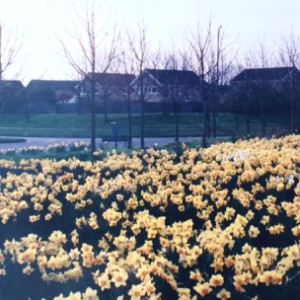MONO MONDAY - SEASONAL
I have just come back from a walk round the back of our house where, across the road, there are several mature horse chestnut trees. At this time of year, as Autumn approaches, the leaves should be turning and there are normally hundreds if not thousands of conkers on these trees, bursting out of their shells and ready to drop.
Sadly, however, this is not the case, as all these trees have been attacked by invasive leaf miner moths - and although the caterpillars don't kill the horse chestnuts, the tiny larvae burrow into the leaves, and this turns them prematurely brown in July and August, leaving the once beautiful trees susceptible to bleeding canker - and this was very evident this morning. We have watched in dismay for several weeks as the leaves became twisted and shrivelled, changed colour and then fell off.
I did find several conkers on a few of the trees and some on the ground, but many of them are immature inside their protective, prickly shell. It is estimated that there are 432,000 horse chestnut trees in England - many are not accounted for but are common in streets, parks and along busy roads, such as the one at the rear of our house.
I then walked over to the island in the middle of a busy intersection, again at the back of our property and felt even more sad. I walked all round the trees - and there are about 40 large horse chestnuts in total - and I didn’t see a single conker. Many of the trees, although quite tall, seem to have “frozen” in their “sticky bud” phase and most of the leaves were brown, twisted and wrinkled. Only a few days ago, I found a photograph, which I have put in as an extra, - taken in the Spring after we first moved in 34 years ago, when the trees were newly planted and there were hundreds of daffodils. If the local Council decides to fell the trees, as there is no cure for the disease, then it could look like this again.
A stricken tree,
a living thing,
so beautiful,
so dignified,
so admirable in its potential longevity,
is, next to man,
perhaps the most touching
of wounded objects.
Edna Ferber
American Novelist


Comments
Sign in or get an account to comment.


